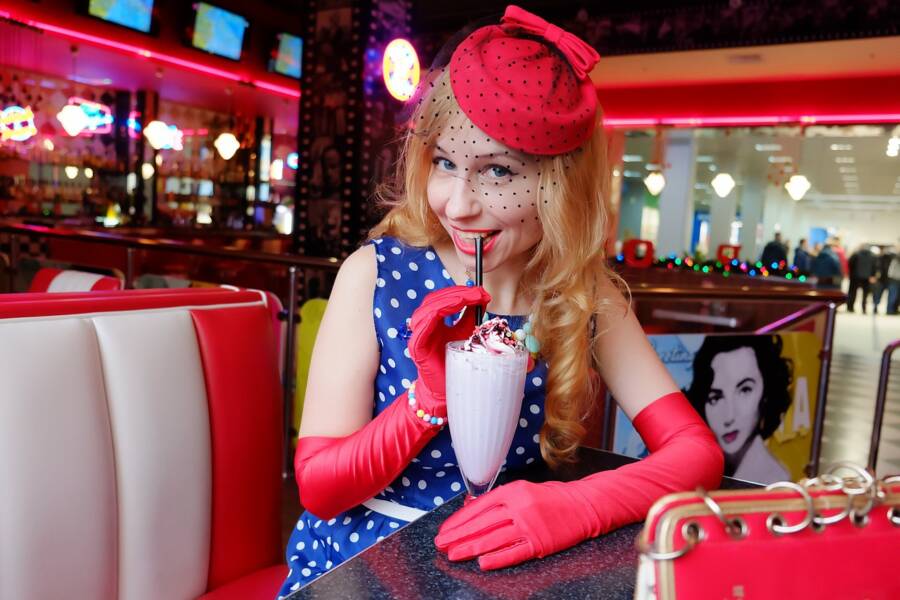In the rich tapestry of global fashion, the United States stands as a dynamic and influential thread, weaving its own distinctive patterns throughout history. From the rugged attire of early settlers to the glamorous runways of New York Fashion Week, American fashion has evolved in tandem with the nation’s cultural, social, and economic landscapes. Join us on a journey through time as we unravel the captivating story of American fashion, exploring its origins, milestones, and enduring impact.

The Early Threads:
Colonial Influences and Frontier Fashion American fashion finds its roots in the diverse tapestry of colonial influences. In the early 17th century, settlers brought with them the styles of their homelands, blending European sensibilities with the practicality demanded by the New World’s rugged terrain. Simple garments crafted from homespun fabrics were commonplace, reflecting the utilitarian ethos of the frontier lifestyle.
As the colonies flourished, fashion began to reflect social status and cultural identity. Wealthier colonists emulated the latest European trends, importing luxurious fabrics and accessories to showcase their affluence. Meanwhile, artisans and craftspeople pioneered indigenous styles, incorporating Native American influences and local materials into their designs.
Revolutionary Chic:
Fashion and Identity in the New Republic The dawn of the Revolutionary War ushered in a new era of American fashion, marked by a spirit of independence and self-expression. The rejection of British authority spurred a movement towards simplicity and practicality, as patriots eschewed lavish attire in favor of garments that symbolized their commitment to liberty.
During this time, iconic symbols of American identity emerged, such as the tricorn hat and homespun garments adorned with patriotic motifs. Women’s fashion also underwent a transformation, with the adoption of simpler silhouettes and the popularization of “red, white, and blue” color schemes.
Industrial Revolution and the Rise of Ready-to-Wear The 19th century witnessed profound changes in American fashion, driven by the rapid industrialization and urbanization of the nation. Innovations in textile manufacturing and garment production revolutionized the way clothing was made and consumed, paving the way for the emergence of the ready-to-wear industry.
Mass-produced clothing became increasingly accessible to the average consumer, democratizing fashion and blurring the lines between social classes. Department stores and mail-order catalogs proliferated, offering a wide array of styles at affordable prices. This era also saw the rise of iconic American brands such as Levi Strauss, who introduced the world to blue jeans, a quintessential symbol of American style.
Roaring Twenties and the Jazz Age:
Flappers, Fashion, and Social Change The Roaring Twenties heralded a new era of prosperity, liberation, and cultural dynamism in America. The jazz age brought with it a spirit of rebellion and experimentation, reflected in the bold and daring fashion choices of the time. The iconic flapper style, characterized by its short hemlines, dropped waists, and embellished details, epitomized the modern, independent woman of the era.
Fashion became a powerful form of self-expression and social commentary, challenging traditional gender norms and embracing newfound freedoms. Designers such as Coco Chanel and Elsa Schiaparelli redefined the boundaries of style, introducing innovative silhouettes and luxurious fabrics that captivated audiences around the world.
Postwar Boom and the Golden Age of American Fashion The aftermath of World War II ushered in a period of unprecedented prosperity and optimism in America, setting the stage for the golden age of American fashion. The 1950s saw a return to glamour and sophistication, as Hollywood icons like Marilyn Monroe and Audrey Hepburn set the standard for elegance and femininity.
American designers such as Christian Dior, Claire McCardell, and Norman Norell gained international acclaim for their timeless creations, blending classic silhouettes with a distinctly American flair. The rise of television and mass media further fueled the popularity of American fashion, bringing haute couture into the living rooms of millions of viewers across the country.
Conclusion:
From its humble beginnings on the colonial frontier to its global prominence on the runways of New York City, American fashion has traversed a remarkable journey shaped by innovation, cultural diversity, and social change. As we look towards the future, the legacy of American fashion continues to evolve, inspiring generations of designers, entrepreneurs, and fashion enthusiasts around the world. Join us as we celebrate the enduring legacy of American style and the endless possibilities that lie ahead in the ever-changing world of fashion.
TechBusinessHQ is a platform about business insights, Tech, News, SEO, 4IR, digital transformation, AI, Blockchain, Cybersecurity, and social media for businesses.
We manage social media groups with more than 200,000 members with almost 100% engagement.






